Study on the Hydraulic and Energy Loss Characteristics of the Agricultural Pumping Station Caused by Hydraulic Structures
Abstract
:1. Introduction
2. Numerical Calculation
2.1. Modeling case and Research Content
2.2. Governing Equation
2.3. Generation of the Computational Grid
2.4. Grid Independence Analysis
2.5. Boundary Condition Setting
3. Entropy production theory
4. Results and Discussion
4.1. External Characteristics
4.2. Internal Characteristics
4.2.1. Longitudinal Profile Flow Analysis
4.2.2. Flow state analysis of bell mouth
4.3. Entropy Production
4.3.1. Entropy Production Distribution Characteristic
4.3.2. Internal Flow Characteristics
5. Conclusions
Author Contributions
Funding
Institutional Review Board Statement
Data Availability Statement
Conflicts of Interest
References
- Constantinescu, S.G.; Patel, V.C. Numerical model for simulation of pump-intake flow and vortices. J. Hydraul. Eng. 1998, 125, 123–134. [Google Scholar] [CrossRef]
- Wang, F.J.; Li, Y.J.; Cong, G.H. CFD simulation of 3D flow in large-bore axial-flow pump with half-elbow suction sump. J. Hydrodyn. Ser. B 2006, 18, 243–247. [Google Scholar]
- Xi, W.; Lu, W.G. Formation mechanism of an adherent vortex in the side pump sump of a pumping station. Int. J. Simul. Model. 2021, 20, 327–338. [Google Scholar] [CrossRef]
- Padmanabhan, M.; Hecker, G.E. Scale effects in pump summodels. J. Hydraul. Eng. ASCE 1984, 110, 1540–1556. [Google Scholar] [CrossRef]
- Denny, D.F. An experimental study of air-entraining vortices in pump sumps∥IMechE. Proc. Inst. Mech. Eng. 1956, 170, 106–116. [Google Scholar] [CrossRef]
- Ansar, M.; Tatsuaki, N. Experimental study of 3D pump intake flows with and without cross flow. J. Hydraul. Eng. 2001, 127, 825–834. [Google Scholar] [CrossRef]
- Liu, C.; Li, D.; Zhou, J.; Tang, F. Application of 3D-PIV to the flow measurements in pump sump. In Proceedings of the ASME/JSME 2007 5th Joint ASME/JSME Fluids Engineering Conference, San Diego, CA, USA, 30 July–2 August 2007. [Google Scholar]
- Jiao, W.X.; Chen, H.J.; Cheng, L.; Zhang, B.W.; Yang, Y.; Luo, C. Experimental study on flow evolution and pressure fluctuation characteristics of the underwater suction vortex of water jet propulsion pump unit in shallow water. Ocean Eng. 2022, 266, 112569. [Google Scholar] [CrossRef]
- Helios, M.P.; Asvapoositkul, W. Numerical studies for effect of geometrical parameters on water jet pump performance via entropy generation analysis. J. Mech. Eng. Sci. 2021, 15, 8319–8331. [Google Scholar] [CrossRef]
- Yang, F.; Li, Z.; Hu, W.; Liu, C.; Jiang, D.; Liu, D.; Nasr, A. Analysis of flow loss characteristics of slanted axial-flow pump device based on entropy production theory. R. Soc. Open Sci. 2022, 9, 208–211. [Google Scholar] [CrossRef]
- Pei, J.; Meng, F.; Li, Y.J.; Yuan, S.Q.; Chen, J. Effects of distance between impeller and guide vane on losses in a low head pump by entropy production analysis. Adv. Mech. Eng. 2016, 8, 2071837044. [Google Scholar] [CrossRef] [Green Version]
- Kock, F.; Herwig, H. Local entropy production in turbulent shear flows a high-Reynolds number model with wall functions. Int. J. Heat Mass Transf. 2004, 47, 2205–2215. [Google Scholar] [CrossRef]
- Zhou, L.; Hang, J.; Bai, L.; Krzemianowski, Z.; El-Emam, M.A.; Yasser, E.; Agarwal, R. Application of entropy production theory for energy losses and other investigation in pumps and turbines: A review. Appl. Energy 2022, 318, 119211. [Google Scholar] [CrossRef]
- Hou, H.; Zhang, Y.; Zhou, X.; Zuo, Z.; Chen, H. Optimal hydraulic design of an ultra-low specific speed centrifugal pump based on the local entropy production theory. Proceedings of the Institution of Mechanical Engineers, Part A. J. Power Energy 2019, 233, 715–726. [Google Scholar] [CrossRef]
- McEligot, D.M.; Nolan, K.P.; Walsh, E.J.; Laurien, E. Effects of pressure gradients on entropy generation in the viscous layers of turbulent wall flows. Int. J. Heat Mass Transf. 2008, 51, 1104–1114. [Google Scholar] [CrossRef]
- Ghasemi, E.; McEligot, D.M.; Nolan, K.P.; Crepeau, J. Entropy generation in a transitional boundary layer region under the influence of freestream turbulence using transitional RANS models and DNS. Int. Commun. Heat Mass Transf. 2013, 41, 10–16. [Google Scholar] [CrossRef]
- Guan, H.; Jiang, W.; Yang, J.; Wang, Y.; Zhao, X.; Wang, J. Energy loss analysis of the double-suction centrifugal pump under different flow rates based on entropy production theory. Proceedings of the Institution of Mechanical Engineers, Part C. J. Mech. Eng. Sci. 2020, 234, 4009–4023. [Google Scholar] [CrossRef]
- Lin, T.; Li, X.; Zhu, Z.; Xie, J.; Li, Y.; Yang, H. Application of enstrophy dissipation to analyze energy loss in a centrifugal pump as turbine. Renew. Energy 2021, 163, 41–55. [Google Scholar] [CrossRef]
- Yu, A.; Tang, Y.; Tang, Q.; Cai, J.; Zhao, L.; Ge, X. Energy analysis of Francis turbine for various mass flow rate conditions based on entropy production theory. Renew. Energy 2022, 183, 447–458. [Google Scholar] [CrossRef]
- Li, D.; Gong, R.; Wang, H.; Xiang, G.; Wei, X.; Qin, D. Entropy production analysis for hump characteristics of a pump turbine model. Chin. J. Mech. Eng. 2016, 29, 803–812. [Google Scholar] [CrossRef]
- Zhang, D.; Katayama, Y.; Watanabe, S.; Tsuda, S.I.; Furukawa, A. Numerical study on loss mechanism in rear rotor of contra-rotating axial flow pump. Int. J. Fluid Mach. Syst. 2020, 13, 241–252. [Google Scholar] [CrossRef]
- Yang, F.; Chang, P.; Cai, Y.; Lin, Z.; Tang, F.; Lv, Y. Analysis of Energy Loss Characteristics of Vertical Axial Flow Pump Based on Entropy Production Method under Partial Conditions. Entropy 2022, 24, 1200. [Google Scholar] [CrossRef] [PubMed]
- Cheng, X.; Wang, P.; Zhang, S. Investigation on matching characteristics of nuclear main pump guide vanes and annular casing. J. Braz. Soc. Mech. Sci. Eng. 2019, 41, 353. [Google Scholar] [CrossRef] [Green Version]
- Ji, Q.; Wu, G.; Liao, W.; Fan, H. Flow Deflection between Guide Vanes in a Pump Turbine Operating in Pump Mode with a Slight Opening. Energies 2022, 15, 1548. [Google Scholar] [CrossRef]
- Zhang, R.; Tan, S.; Ding, X.; Xu, H.; Feng, J.; Mou, T.; Fei, Z. Flow loss characteristics of vertical shaft cross-flow pump based on entropy production theory. Adv. Sci. Technol. Water 2022, 3, 9–11. [Google Scholar]
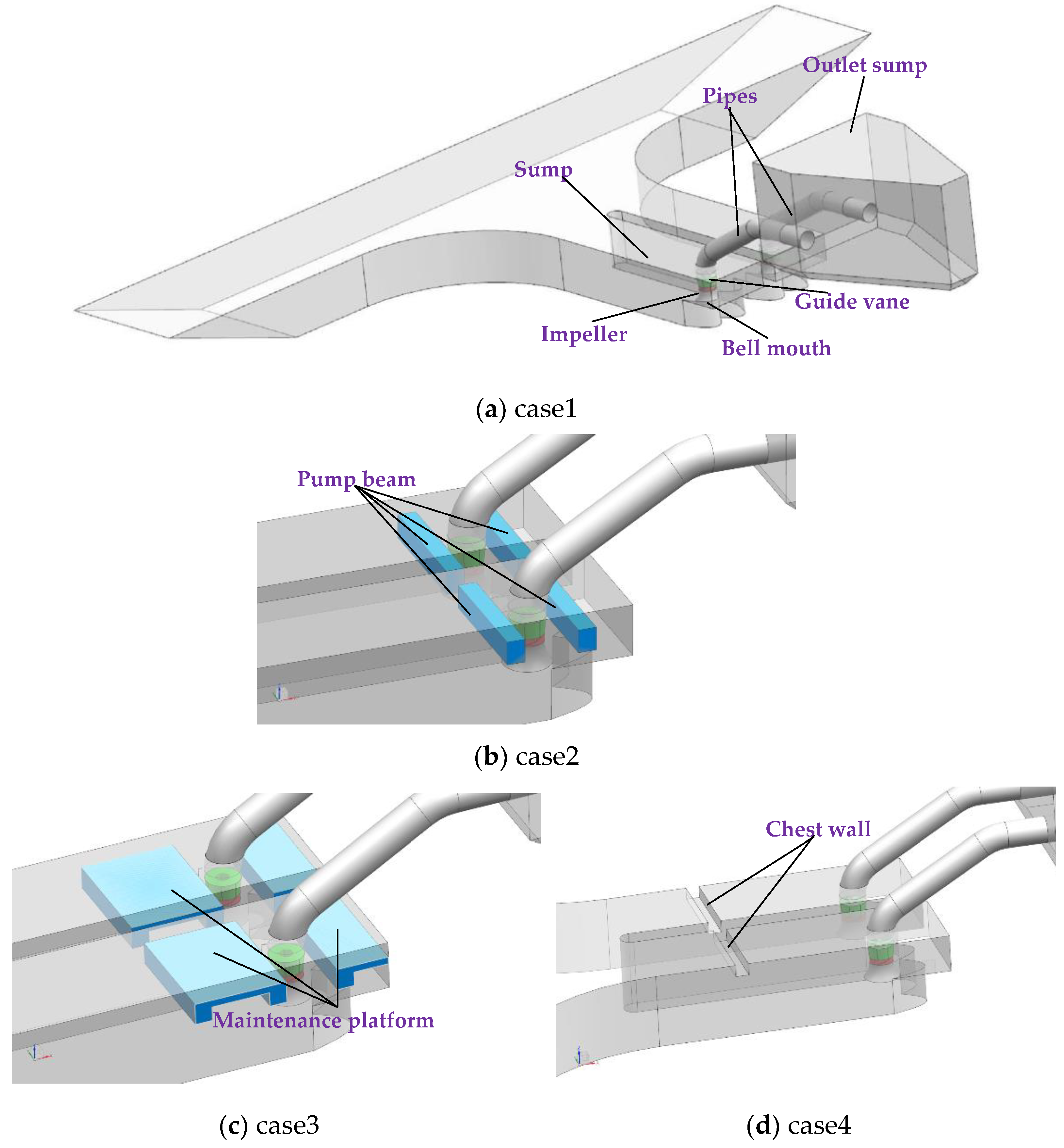

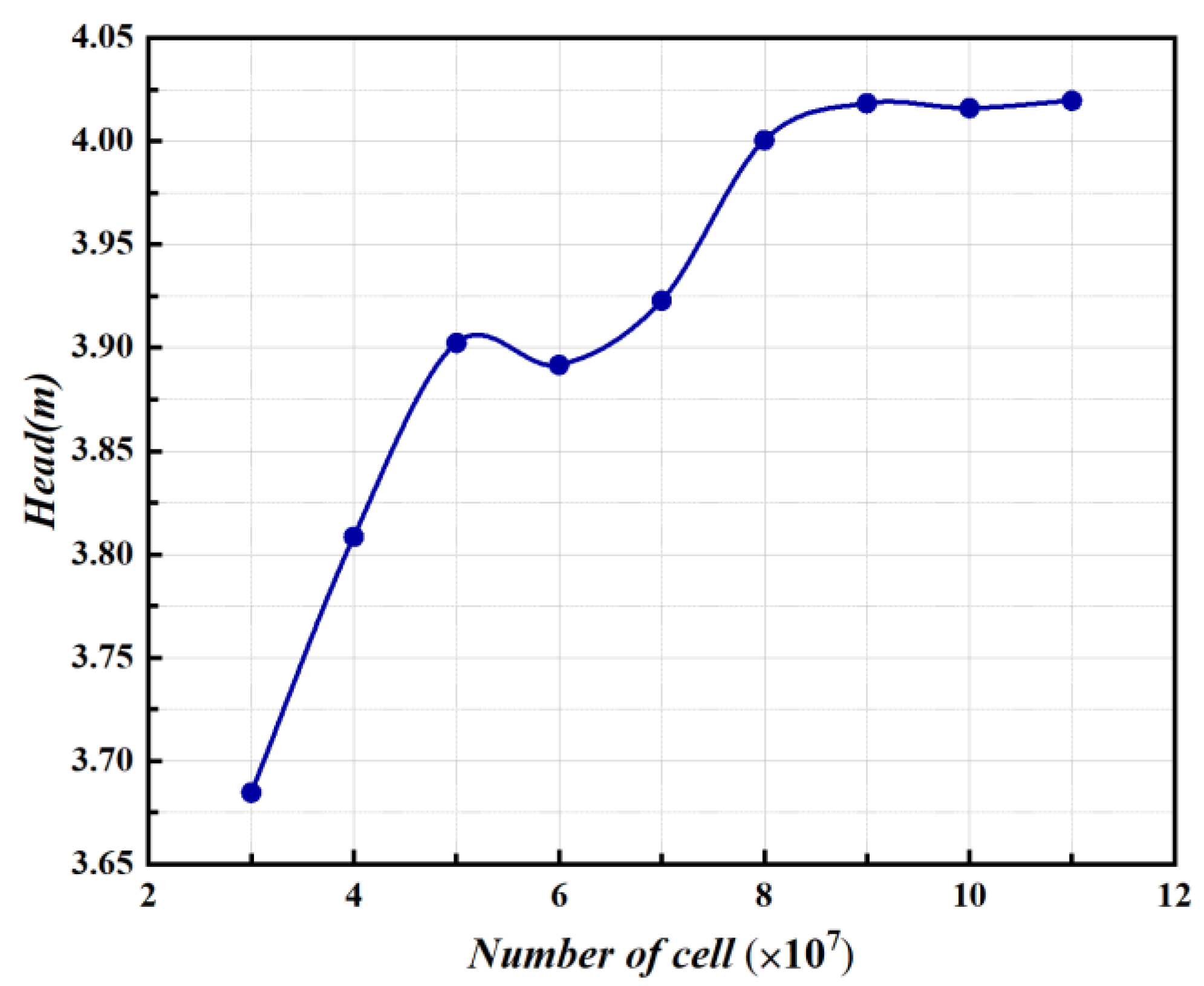
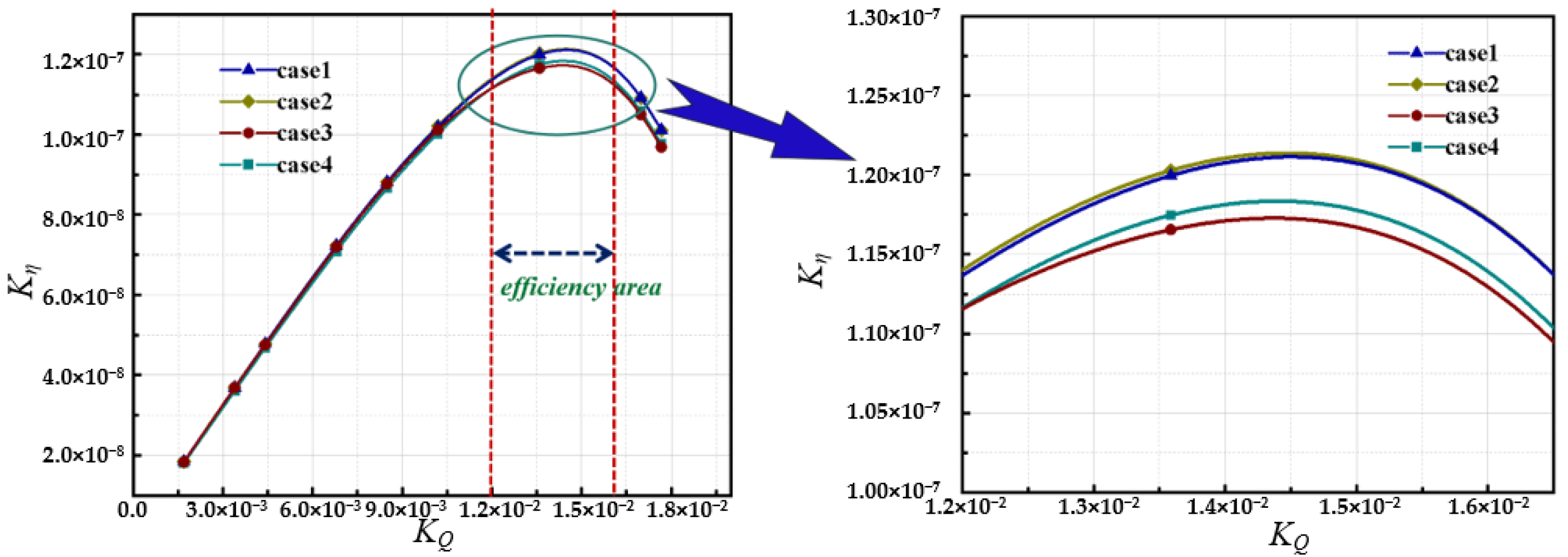
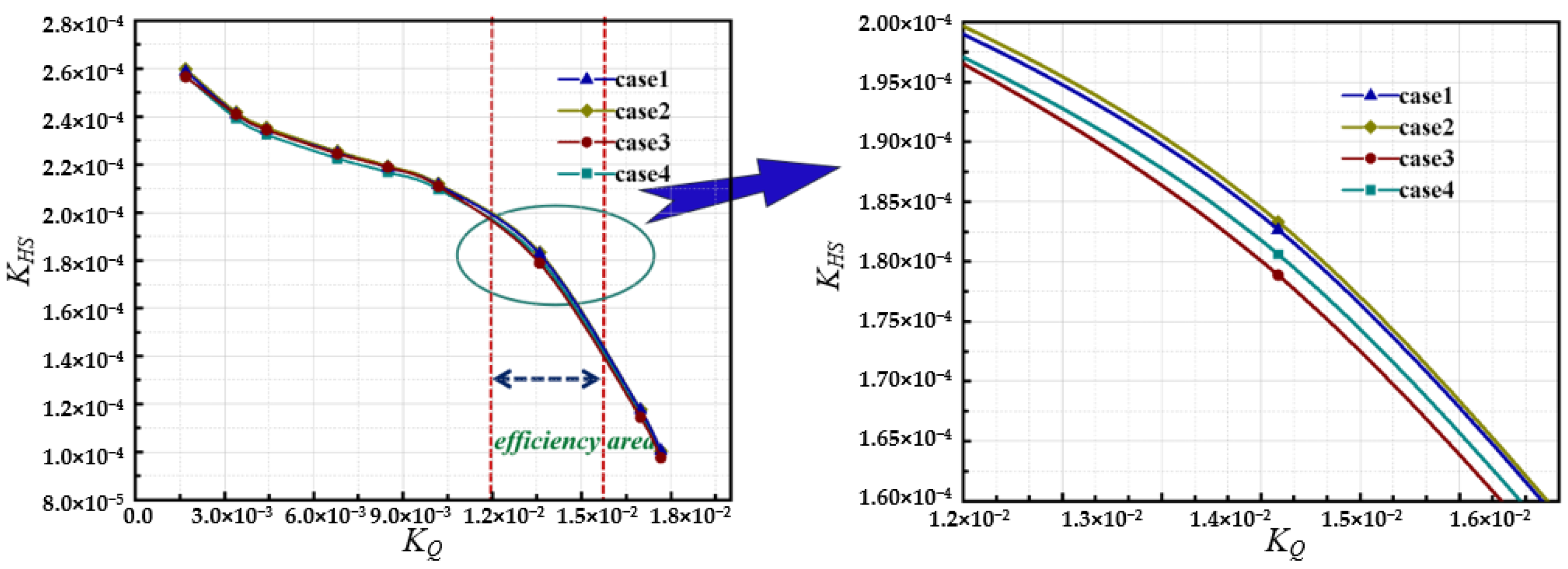
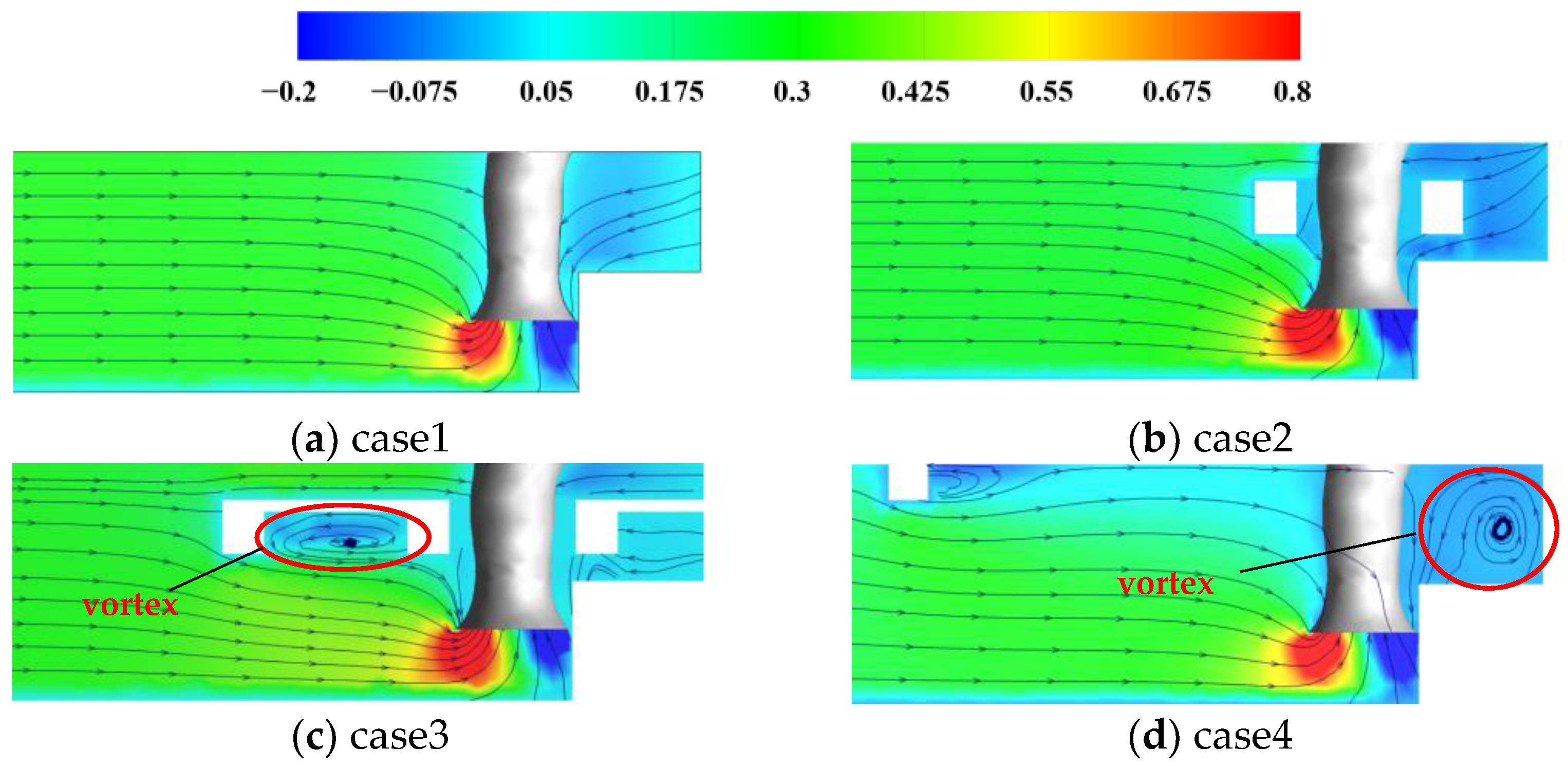



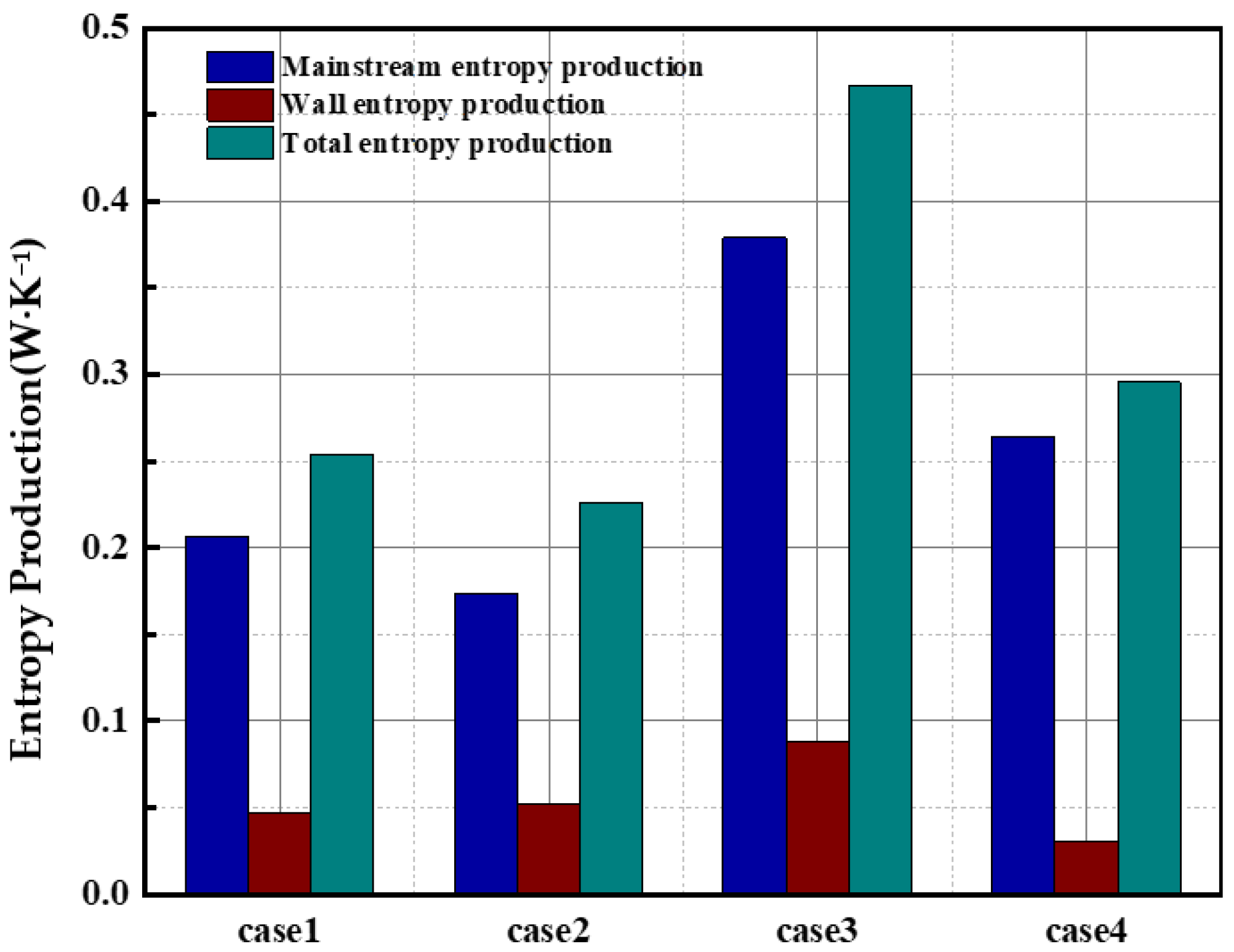

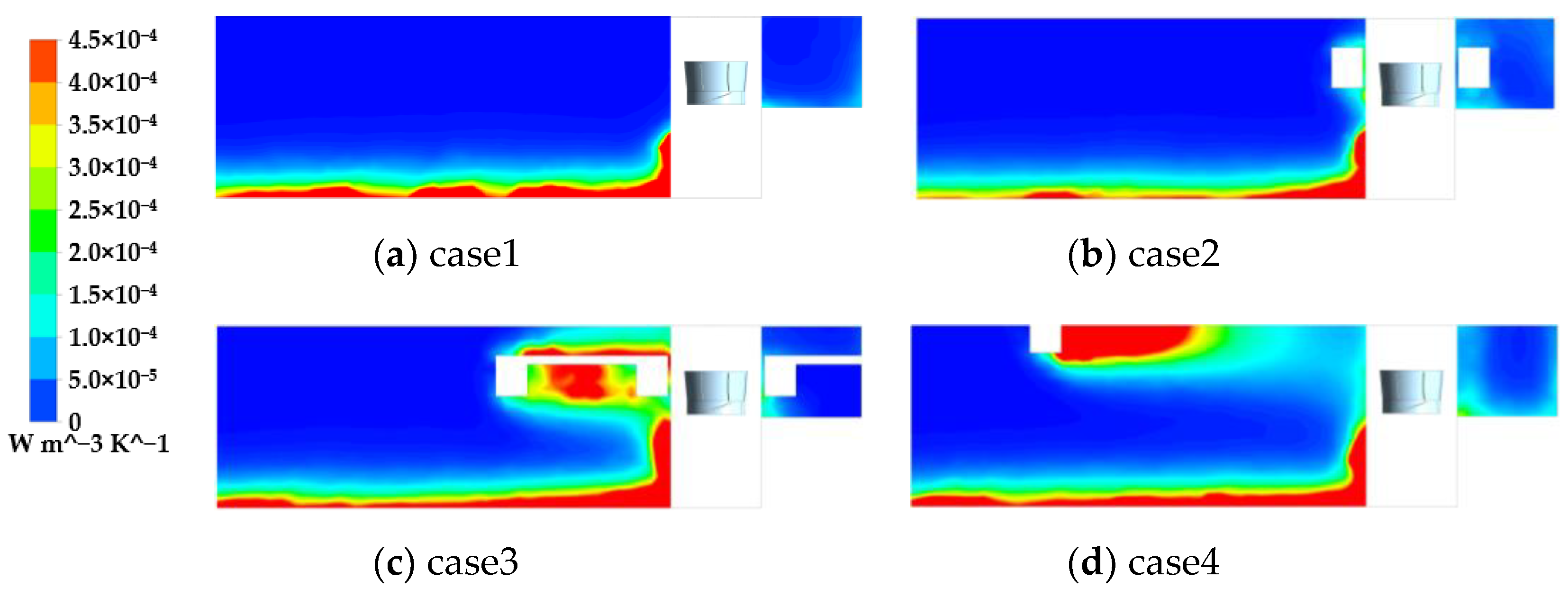


| Case | Entropy Production Value (W·K−1) | |||
|---|---|---|---|---|
| Direct Dissipation Entropy Production | Turbulent Energy Dissipation Entropy Production | Wall Dissipation Entropy Production | Total Entropy Production | |
| 1 | 1.81 × 10−3 | 0.205 | 0.048 | 0.254 |
| 2 | 1.54 × 10−3 | 0.172 | 0.052 | 0.226 |
| 3 | 1.92 × 10−3 | 0.377 | 0.088 | 0.467 |
| 4 | 1.23 × 10−3 | 0.263 | 0.031 | 0.295 |
Publisher’s Note: MDPI stays neutral with regard to jurisdictional claims in published maps and institutional affiliations. |
© 2022 by the authors. Licensee MDPI, Basel, Switzerland. This article is an open access article distributed under the terms and conditions of the Creative Commons Attribution (CC BY) license (https://creativecommons.org/licenses/by/4.0/).
Share and Cite
Jiao, W.; Li, Z.; Cheng, L.; Wang, Y.; Zhang, B. Study on the Hydraulic and Energy Loss Characteristics of the Agricultural Pumping Station Caused by Hydraulic Structures. Agriculture 2022, 12, 1770. https://doi.org/10.3390/agriculture12111770
Jiao W, Li Z, Cheng L, Wang Y, Zhang B. Study on the Hydraulic and Energy Loss Characteristics of the Agricultural Pumping Station Caused by Hydraulic Structures. Agriculture. 2022; 12(11):1770. https://doi.org/10.3390/agriculture12111770
Chicago/Turabian StyleJiao, Weixuan, Zhishuang Li, Li Cheng, Yuqi Wang, and Bowen Zhang. 2022. "Study on the Hydraulic and Energy Loss Characteristics of the Agricultural Pumping Station Caused by Hydraulic Structures" Agriculture 12, no. 11: 1770. https://doi.org/10.3390/agriculture12111770









